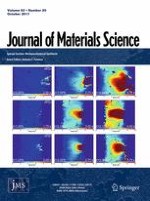10.07.2017 | Biomaterials
Preparation and characterization of poly(ε-caprolactone)/ZnO foams for tissue engineering applications
Erschienen in: Journal of Materials Science | Ausgabe 20/2017
EinloggenAktivieren Sie unsere intelligente Suche, um passende Fachinhalte oder Patente zu finden.
Wählen Sie Textabschnitte aus um mit Künstlicher Intelligenz passenden Patente zu finden. powered by
Markieren Sie Textabschnitte, um KI-gestützt weitere passende Inhalte zu finden. powered by
